An evening with Gaspode © Neil J Mackie, 2003.
You may have heard of the Bottlehead Corporation, http://www.bottlehead.com particularly if you have an interest in components with valves in them. Bottlehead produce a range of low cost kits comprising line pre-amps, power amps and speakers, in addition to producing the magazine 'Valve'. They also have a forum which is part of Audio Asylum http://www.audioasylum.com/forums/bottlehead/bbs.html . As I have one of their products, a pair of Paraglow monoblocks, which are power amps with a 2A3 output valve and an output transformer in parafeed arrangement, I keep an eye on the forum for any interesting posts, and contribute when I can.
It was through making a post that I got in contact with 'Gaspode' (the forums allow you to be known by a nickname). Gaspode has a Bottlehead Paraglow II and my enquiries about the circuit of the Paraglow II as a 'cure' for my Paraglow resulted in a few more emails and an invitation to bring my Paraglows along for a side-by-side comparison. It turns out that Gaspode lives near Maidenhead, Berks. I had a week away from home in Guildford in my diary, so I arranged to spend one of my free evenings visiting Gaspode.
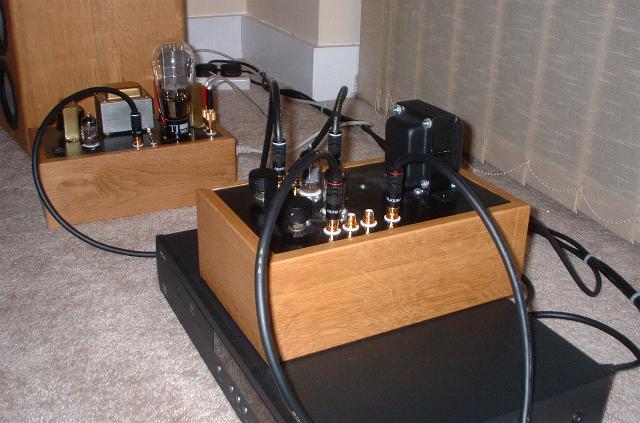
Gaspode has a complete and up-to-date 'Bottlehead' system comprising Foreplay pre-amp, Paraglow II power monoblocks and Straight 8 speakers. This picture shows the Foreplay pre-amp with one of the Paraglows behind it and the Straight 8 in the background

Another picture of the Foreplay pre-amp which has dual "Sweet Whispers" stepped attenuators with another "Sweet Whispers" as a balance control. Unfortunately I cannot give more information about the Foreplay's circuit as it has not been published. However it is part of the Foreplay manual which is available from http://www.bottlehead.com

The Paraglow's younger brother - the Paraglow II
The Paraglow II is a kit upgrade to the original Paraglow. It is offered by Examplar Audio www.exemplaraudio.com/ who describe it thus
"The kit involves completely replacing the 5965 driver stage and changing the cathode resistor on the output tube. The driver is changed to a 6N1P with one half used to shunt regulate the other half."These figures below show the block diagrams of the Paraglow (left) and Paraglow II (right). The differences between them are described next.
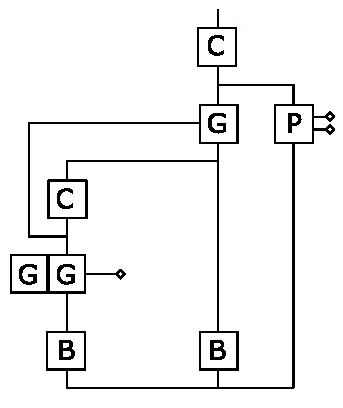
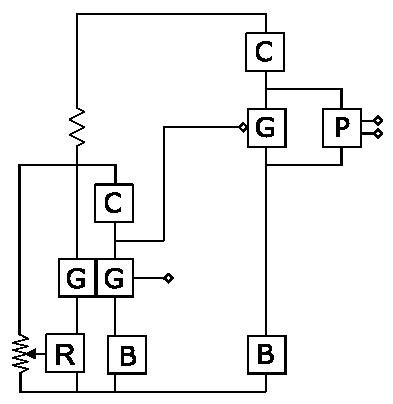
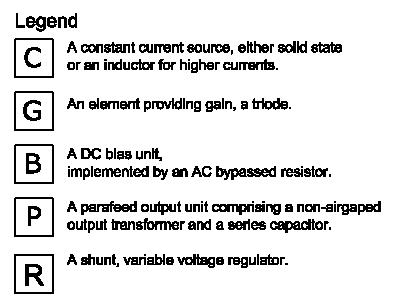
Comparing the output of the two circuits it can bee seen that the parafeed connection is changed, connecting to the cathode of the 2A3 instead of to ground. This is probably an improvement, removing the DC bias unit with its associated capacitor from the loop. However this change is easily made on any Paraglow and indeed my own Paraglows were built with the 'II' style parafeed connection. The only other change in the output stage is an increase in the bias resistor from 2K5 to 3K3.
The direct connection between the first and second stages is maintained but it is the first stage that changes most. On the forums when the differences between the two amps are described, the most common comment is that the driver stage is regulated using the spare half of the first stage valve (which is a twin triode). However this may overlook the most significant change which is that the driver valve changes from a 5965 to a 6S1P. Here are the specs of the two valves:
| valve | anode voltage | max current mA | average current mA | grid voltage typ | gain | plate resistance ohms | transconductance uS | |
| 5965 | 330 | 16.5 | 8.5 | -2 | 47 | 6700 | 7000 | |
| 6N1P | 250V | 20mA | 6 - 10 mA | 35 | 4400 | 7500 |
So does the Paraglow II have a modified power supply to supply a different anode voltage? Well no. The Paraglow supplies the 5965 with 145V, with 110V at the anode, a voltage which would also suit the 6N1P in the II. You will note however that the anode supply is rather more direct in the II. The arrangement in the Paraglow, where the driver supply is tapped from the cathode of the output valve, may work on paper but it caused me, as a valve newbe, an hour or two of headscratching while trying to troubleshoot and set the DC bias voltages. The II's supply is much more direct, conventional and easier to troubleshoot. There is a slight change to the bias unit of the driver stage, changing from 274 to 332 ohms, which is without AC bypass in both amps.
So are the comments about a regulated first stage supply justified? Well you can see that both drivers are fed by a solid state constant current unit, in fact the same constant current unit is used in both amps. The question is, why regulate the supply fed to a constant current unit (assuming it is not a very poor constant current unit)? In the Paraglow the constant current unit drops 35V but in the II it has potentially 300V to contend with, and it is here that the real reason for the shunt regulator lies. The constant current source has neither the voltage or power handling capacity to cope with a 300V supply. However at 20mA the Paraglow II's 15K load between the supply and the constant current source can drop 300V , enough to get the voltage down to levels the constant current supply can handle. The shunt regulator is a LT1431, a three terminal device with its V+ connected to the anode (the grid of the 6N1P is grounded), its ground to ground and its ref connected to an adjustable voltage divider measuring the supply to the constant current supply.
In summary, the II involves a change to the driver valve and cleans up the original Paraglow circuit by deft use of the unused section of the driver valve without involving the complication of building a lower voltage power supply. They should have called it the UltraGlow as everything on the top plate is lit up.
For a comparison of the 6N1P valve and 18 substitutes for it have a look at http://english.aopen.com.tw/company/market/promotion/Tube/Tube-ol-E0207B.pdf
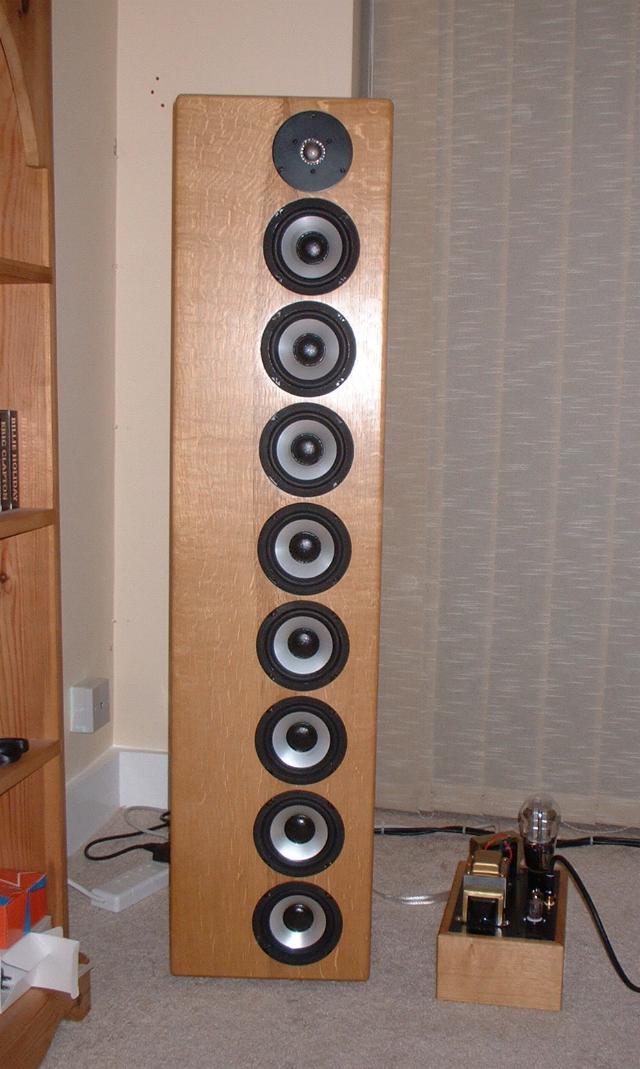
Straight 8's
The Straight 8's are best described with reference to the pictures. The kit is based on an array of 8 low cost drivers in a line array. Although low cost, the cones of the drivers are given a 'magic' treatment by Bottlehead. to stiffen them. This treatment is on its second revision and leaves the drives with a slightly tacky surface. Bottlehead. leave it to the builder to construct a cabinet to their plans. In Gaspode's case the results are impressive. Gaspode worked with a local custom office-furniture maker, and together they built the cabinets from english oak. Not cheap but the result is a beautiful piece of furniture.
How it sounded
Initial impressions of the system were cautious, bass was more extended than I am used to, but the sound stage went from the speakers backwards, while I prefer a more immediate presentation in front of the speakers. Gaspode has an unusual problem with his room in that the side nearest the outside wall is noticeably louder than that next to the internal wall. Having build from a kit and using components without feedback, the worry is that there is a genuine difference in gain between channels, but many cable, equipment and component swaps between channels have been unable to remove the effect. Having eventually taken the trouble to swap rooms Gaspode has confirmed that it is a genuine 'room effect' and also found that his front room sounds better than his current music room. Steps are being taken to adjust the domestic arrangements so the system can be located there permanently.
Swapping in my Paraglows confirmed that they are noisier than Gaspode's Paraglow IIs and from his memory, noisier than his Paraglows I's were. That is despite my attention to screening during construction. This comparison also confirmed my impression of the Paraglow's top end, the IIs being clearer than the I's. We swapped back to the Paraglow IIs and continued listening to a variety of tracks. As the evening drew to a close the system has one more surprise. We played "As the World" by Echolyn which I considered a poor recording, but one I play because I love the music. To my surprise it come out sounding better then I had ever heard it sound - the music seemed to really suit the Straight 8's.
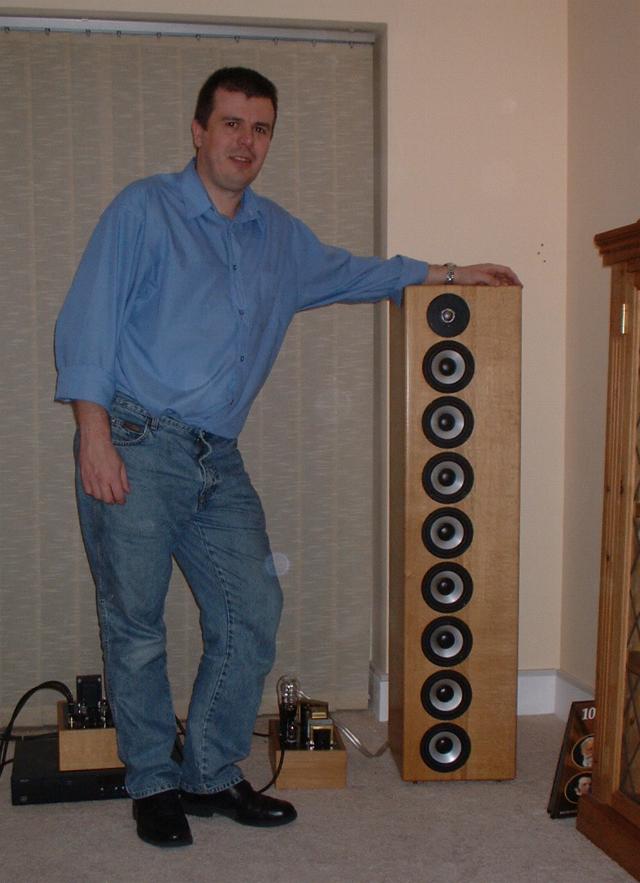
...and another thing
I asked Gaspode to explain his moniker, thinking it had something to do with valves. Instead it has a dual meaning, being a small dog in Terry Pratchett books which are a favourite with Mrs Gaspode, and it also means 'bad master' in Russian; Gaspode reads the Bottlehead. forum while waiting for a partner to play online chess.
Thanks to Gaspode for his warm hospitality.
Last modified: Thu Oct 30 10:12:53 GMT Standard Time 2003